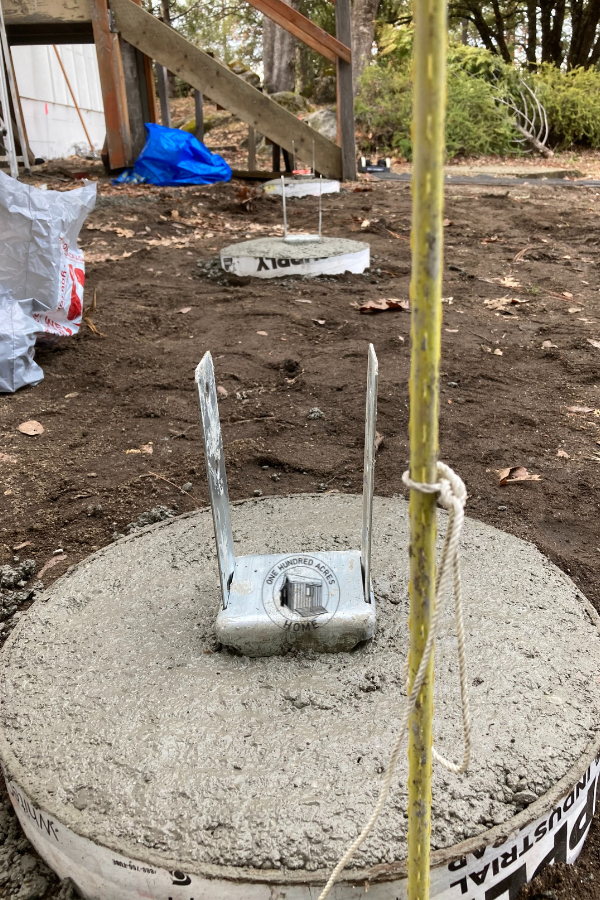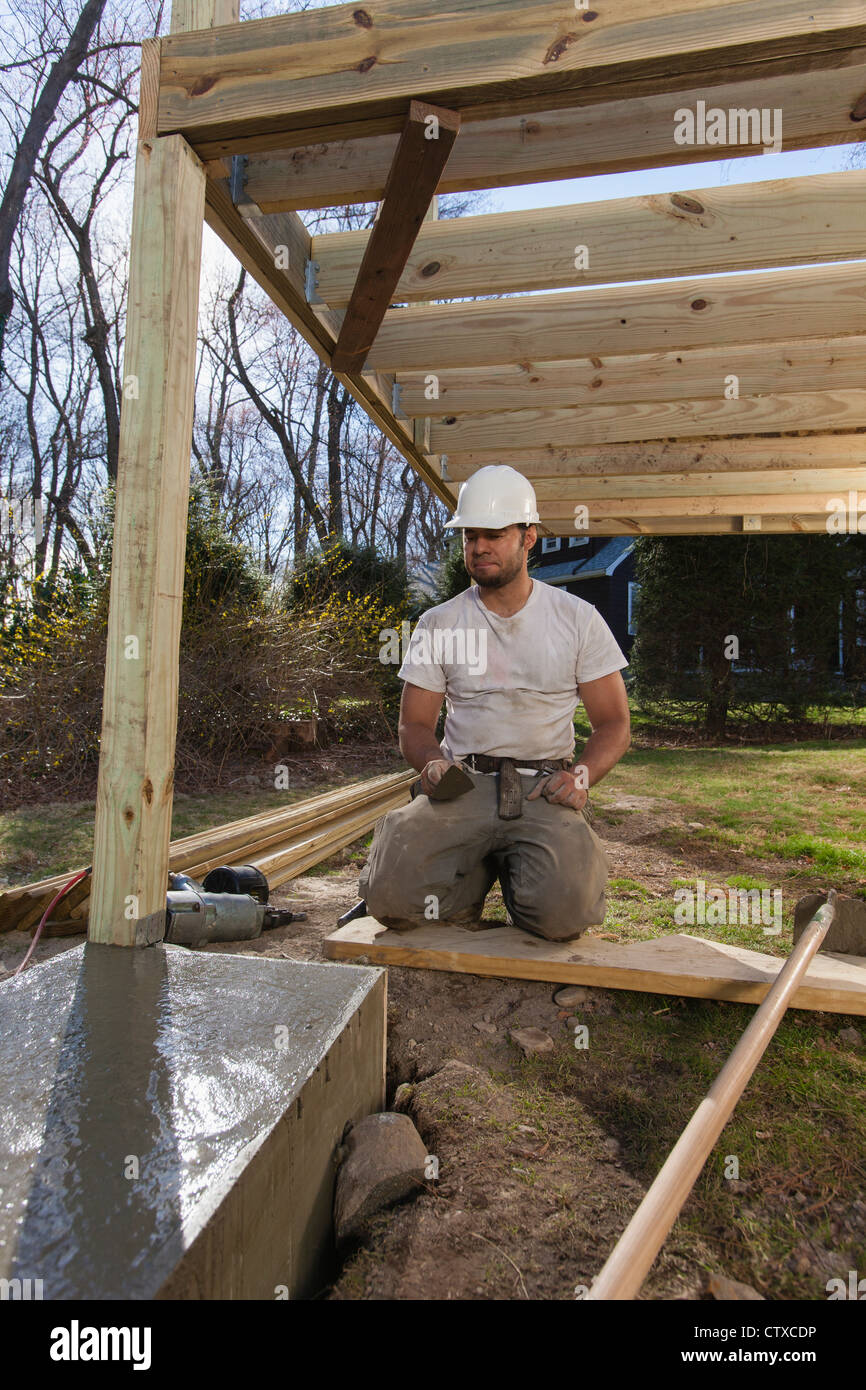Structure from the Ground Up: The Ultimate Guide to Designing and Setting Up Deck Footings
Structure from the Ground Up: The Ultimate Guide to Designing and Setting Up Deck Footings
Blog Article
Picking the Right Deck Footings for Security and Durability
The longevity and safety of your deck depend heavily on the kind of footings you choose, as they offer the vital support and stability to withstand the test of time. In this discussion, we will certainly check out the different kinds of deck grounds, think about the crucial elements to consider when making a choice, and dig into the pros and cons of various alternatives.
Kinds Of Deck Grounds
These footings are composed of a cylindrical hole filled up with concrete, which offers a solid structure for the deck posts. Concrete pier grounds are relatively easy to set up and supply exceptional stability, making them a preferred option for many deck tasks.
An additional kind of footing is the helical pile ground. Helical piles are steel shafts with helical plates connected to them. These grounds are installed by screwing them right into the ground, which creates a safe structure for the deck. Helical heap footings are optimal for locations with difficult dirt conditions, as they can be installed in almost any kind of sort of soil. If required., they also enable for simple adjustment and progressing of the deck.
Additionally, some home builders select precast concrete grounds. These footings are made from resilient concrete and be available in numerous shapes and dimensions to fit different deck layouts. Precast concrete grounds are hassle-free to install and give a secure base for the deck framework.
Lastly, one more choice is the post-in-anchor footing system. This type of footing involves driving a metal anchor into the ground and connecting it to the deck article. It provides versatility in regards to placing the deck messages and appropriates for decks with lightweight structures.
When picking the right type of deck ground, it is necessary to consider elements such as dirt conditions, deck load, and local building regulations (Deck Footings). Consulting with a professional contractor or architectural engineer can help make certain the ideal footing is picked for a steady and secure deck
Variables to Consider When Picking Grounds
When picking the appropriate footings for a deck, it is vital to carefully think about various aspects such as soil problems, deck tons, and adherence to neighborhood structure codes. These factors play a substantial duty in guaranteeing the security and resilience of the deck framework.
The kind of soil on which the deck will be constructed identifies the type of footings needed. On the various other hand, decks developed on clay or extensive soils might require grounds that can accommodate the dirt's tendency to expand and agreement.
One more essential aspect is the deck tons. The weight of the deck, including the products made use of and any type of possible real-time lots such as furniture or events, should be considered when picking grounds. The footings should be made to birth the weight of the deck and distribute it uniformly to stop any architectural issues or failures.
Last but not least, adherence to neighborhood building codes is vital. Building codes vary from region to region, and it is vital to adhere to the specific needs set by the local authorities. Deck Footings. These codes ensure that the deck is built safely and meets the required requirements for architectural stability and load-bearing capability
Concrete Grounds: Advantages And Disadvantages

Concrete grounds provide numerous benefits and negative aspects when made use of as the structure for a deck. On the favorable side, concrete footings provide outstanding security and durability. Concrete is a inflexible and strong material that can support heavy tons and endure various climate condition. It additionally has a long lifespan, making it a reliable choice for long-lasting usage.
An additional advantage of concrete grounds is their convenience. They can be poured right into different sizes and shapes to suit different deck styles and arrangements. Concrete footings can be tailored to fit the certain requirements and needs of the deck framework.
Nevertheless, there are additionally some drawbacks to making use of concrete footings. One major downside is the cost and labor associated with their installation. Concrete grounds need excavation and often need the support of heavy machinery. This can raise the overall expense of the deck job and might need professional support.

Helical Piers Vs. Sonotubes: Which Is Much better?
In considering the structure alternatives for a deck, the contrast in between helical piers and sonotubes is critical in determining the superior selection. Helical piers, additionally referred to as screw piles, are steel shafts with helical plates connected to them. They are turned into the ground making use of hydraulic machinery, supplying a secure and resilient structure for the deck. On the other hand, sonotubes are round types made of cardboard or fiber product that are filled up with concrete. They are placed in an opening explored the ground and offer support see page for the deck.
The helical plates on the piers develop a solid hold with the dirt, moving or stopping any type of motion of the deck. Sonotubes, on the other hand, rely entirely on the concrete filling for security, which might not supply the exact same degree of toughness and resistance.
In regards to installment, helical piers are fairly much easier and faster to mount contrasted to sonotubes. The hydraulic equipment used to twist the piers right into the ground ensures a quick and effective process. Sonotubes, on the other hand, require digging holes and putting concrete, which can be time-consuming and labor-intensive.
Additionally, helical piers are an even more versatile alternative. If required, they can be utilized in numerous soil problems and can be changed or reinforced. Sonotubes, on the various other hand, may require added assistance, such as rebar, in certain soil conditions or locations with high tons demands.
Picking the Right Footings for Your Deck's Dimensions
For ideal structural stability, it is important to meticulously choose the suitable grounds that straighten with the measurements of your deck. The dimensions of your deck, including its length, size, and elevation, play a substantial duty in identifying the kind and dimension of grounds called for.
When choosing footings for your deck, it is necessary to consider the load-bearing ability of the dirt. The weight of the deck, combined with the weight of any furniture or people on it, puts in a significant force on the grounds (Deck Footings). Therefore, it is essential to choose footings that can appropriately support this weight without changing or sinking with time.
The size and shape of the grounds should additionally be considered. Larger decks with higher dimensions need bigger footings to offer adequate security and support. The form of the grounds, whether they are round or square, relies on the style and design of the deck. In addition, the depth at which the footings are set up must be established based upon the frost line in your region to useful site avoid any type of heaving or shifting as a result of freezing temperatures.
Final Thought
Finally, selecting the right deck grounds is critical for making sure stability and toughness. Aspects such as the kind of grounds, the deck's measurements, and the benefits and drawbacks of various alternatives need to be taken into consideration. Concrete grounds supply toughness and long life, but may be a lot more pricey and lengthy to install. Helical piers and sonotubes have their very own benefits and disadvantages. Inevitably, selecting the suitable footings for your deck's particular demands is essential for a successful and resilient framework.
These footings are composed of a round hole loaded with concrete, which provides a strong foundation for the deck our website posts. Concrete pier footings are relatively simple to mount and supply exceptional security, making them a preferred choice for several deck projects.
Precast concrete grounds are practical to set up and offer a secure base for the deck structure.
It provides adaptability in terms of positioning the deck articles and is suitable for decks with light-weight structures.
Concrete footings offer a number of benefits and drawbacks when made use of as the foundation for a deck.
Report this page